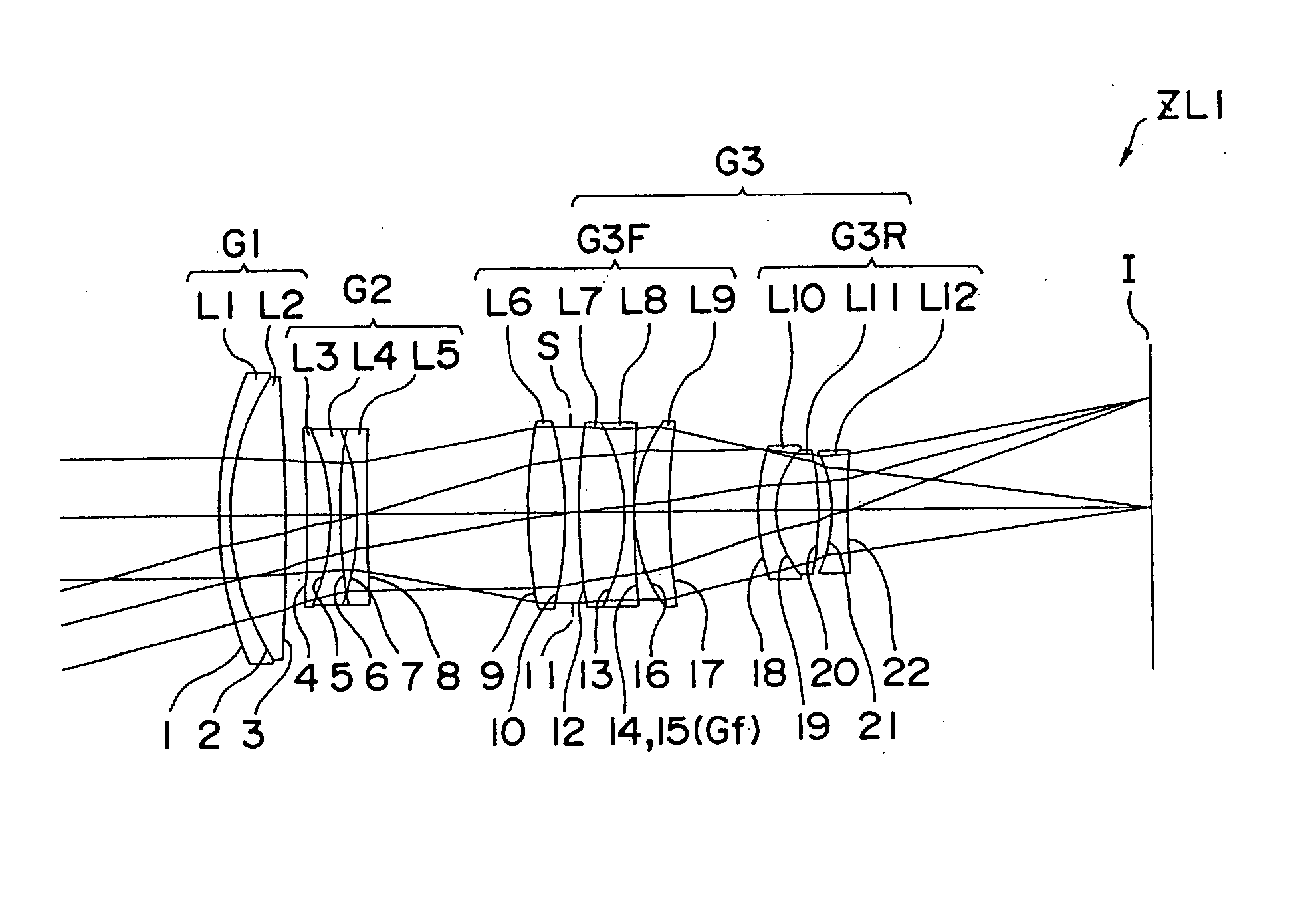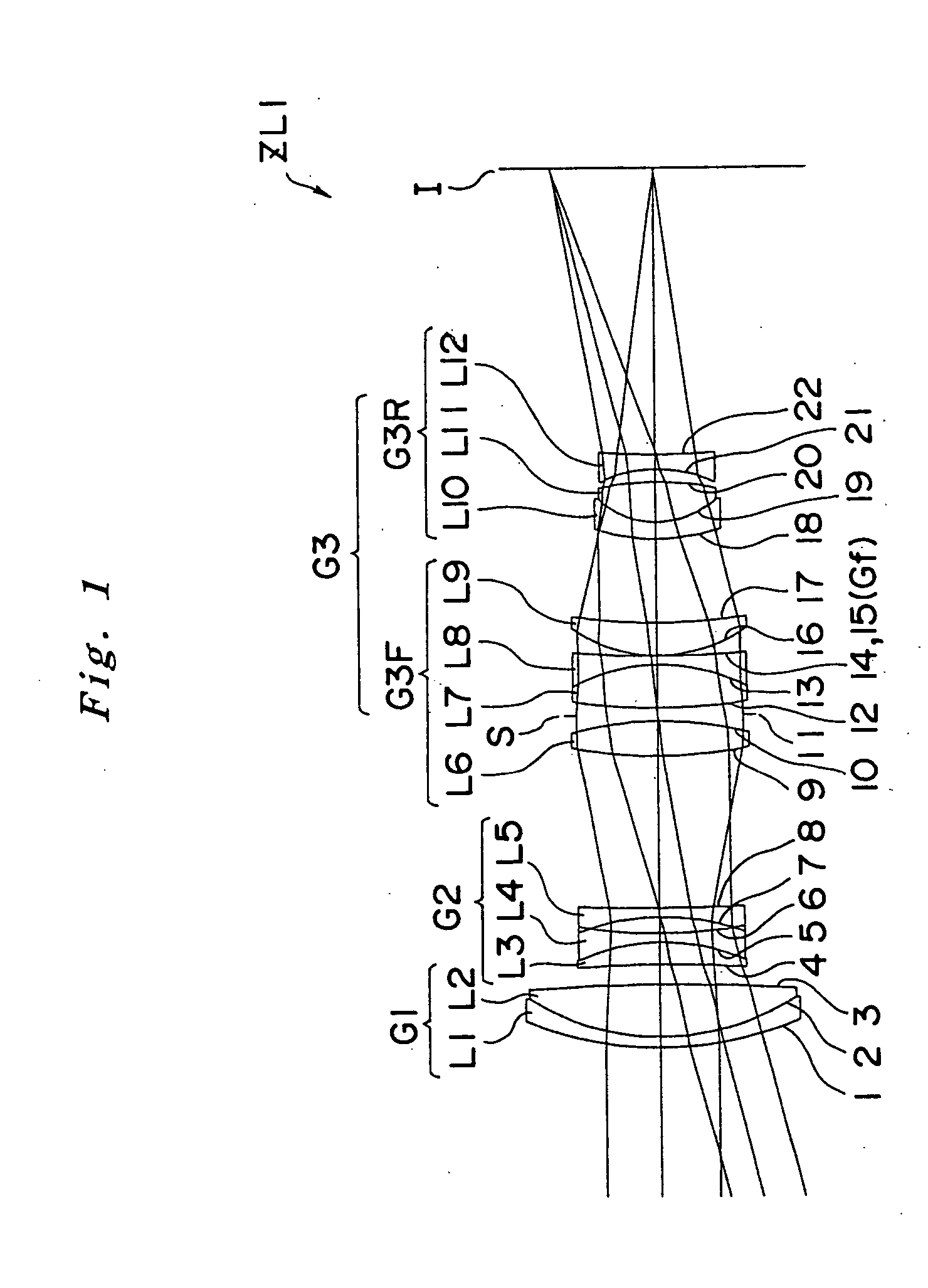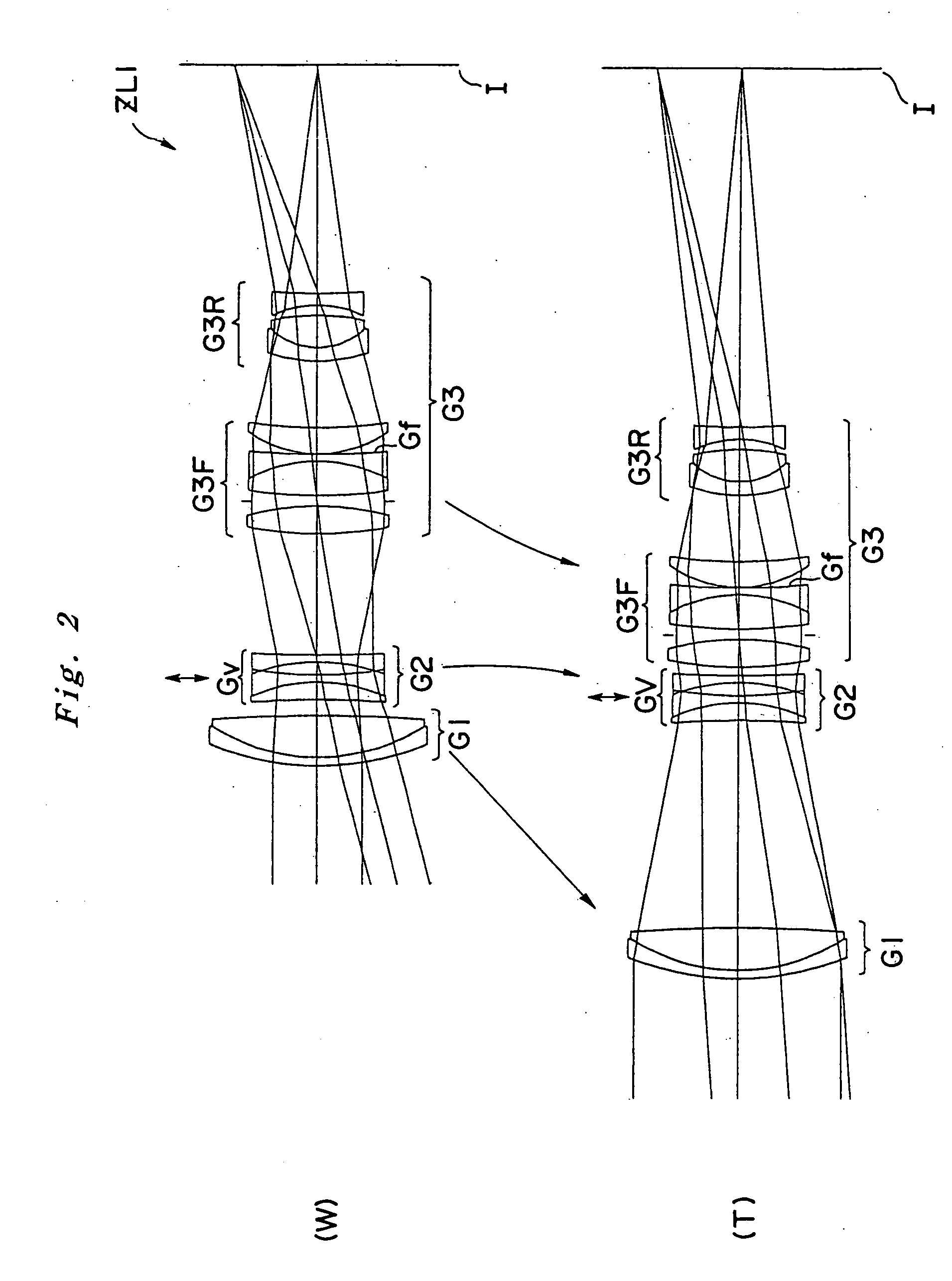Zoom lens system
- Summary
- Abstract
- Description
- Claims
- Application Information
AI Technical Summary
Benefits of technology
Problems solved by technology
Method used
Image
Examples
example 1
Example 1 of the present invention is explained below with reference to FIGS. 1 through 4. FIG. 1 is a diagram showing lens construction of a zoom lens system according to Example 1 of the present invention. In a zoom lens system ZL1 used in Example 1, as shown in FIG. 1, a first lens group G1 having positive refractive power is composed of, in order from an object, a cemented lens constructed by a negative meniscus lens L1 having a convex surface facing to the object cemented with a double convex lens L2. A second lens group G2 having negative refractive power is composed of, in order from the object, a cemented lens constructed by a positive meniscus lens L3 having a convex surface facing to an image cemented with a double concave lens L4 and a double concave lens L5. A third lens group G3 having positive refractive power is composed of, in order from the object, a double convex lens L6, an aperture stop S, a cemented lens constructed by a double convex lens L7 cemented with a do...
example 2
Example 2 of the present invention is explained below with reference to FIGS. 5 through 8. FIG. 5 is a diagram showing lens construction of a zoom lens system according to Example 2 of the present invention. In a zoom lens system ZL2 used in Example 2, as shown in FIG. 5, a first lens group G1 having positive refractive power is composed of, in order from an object, a cemented lens constructed by a negative meniscus lens L1 having a convex surface facing to the object cemented with a double convex lens L2 and a negative meniscus lens L3 having a convex surface facing to the object. A second lens group G2 having negative refractive power is composed of, in order from the object, a cemented lens constructed by a positive meniscus lens L4 having a convex surface facing to an image cemented with a double concave lens L5 and a double concave lens L6. A third lens group G3 having positive refractive power is composed of, in order from the object, a double convex lens L7, an aperture stop...
example 3
Example 3 of the present invention is explained below with reference to FIGS. 9 through 12. FIG. 9 is a diagram showing lens construction of a zoom lens system according to Example 3 of the present invention. In a zoom lens system ZL3 used in Example 3, as shown in FIG. 9, a first lens group G1 having positive refractive power is composed of, in order from an object, a cemented lens constructed by a negative meniscus lens L1 having a convex surface facing to the object cemented with a double convex lens L2. A second lens group G2 having negative refractive power is composed of, in order from the object, a cemented lens constructed by a positive meniscus lens L3 having a convex surface facing to an image cemented with a double concave lens L4 and a double concave lens L5. A third lens group G3 having positive refractive power is composed of, in order from the object, a double convex lens L6, an aperture stop S, a cemented lens constructed by a double convex lens L7 cemented with a d...
PUM
 Login to View More
Login to View More Abstract
Description
Claims
Application Information
 Login to View More
Login to View More - R&D
- Intellectual Property
- Life Sciences
- Materials
- Tech Scout
- Unparalleled Data Quality
- Higher Quality Content
- 60% Fewer Hallucinations
Browse by: Latest US Patents, China's latest patents, Technical Efficacy Thesaurus, Application Domain, Technology Topic, Popular Technical Reports.
© 2025 PatSnap. All rights reserved.Legal|Privacy policy|Modern Slavery Act Transparency Statement|Sitemap|About US| Contact US: help@patsnap.com



